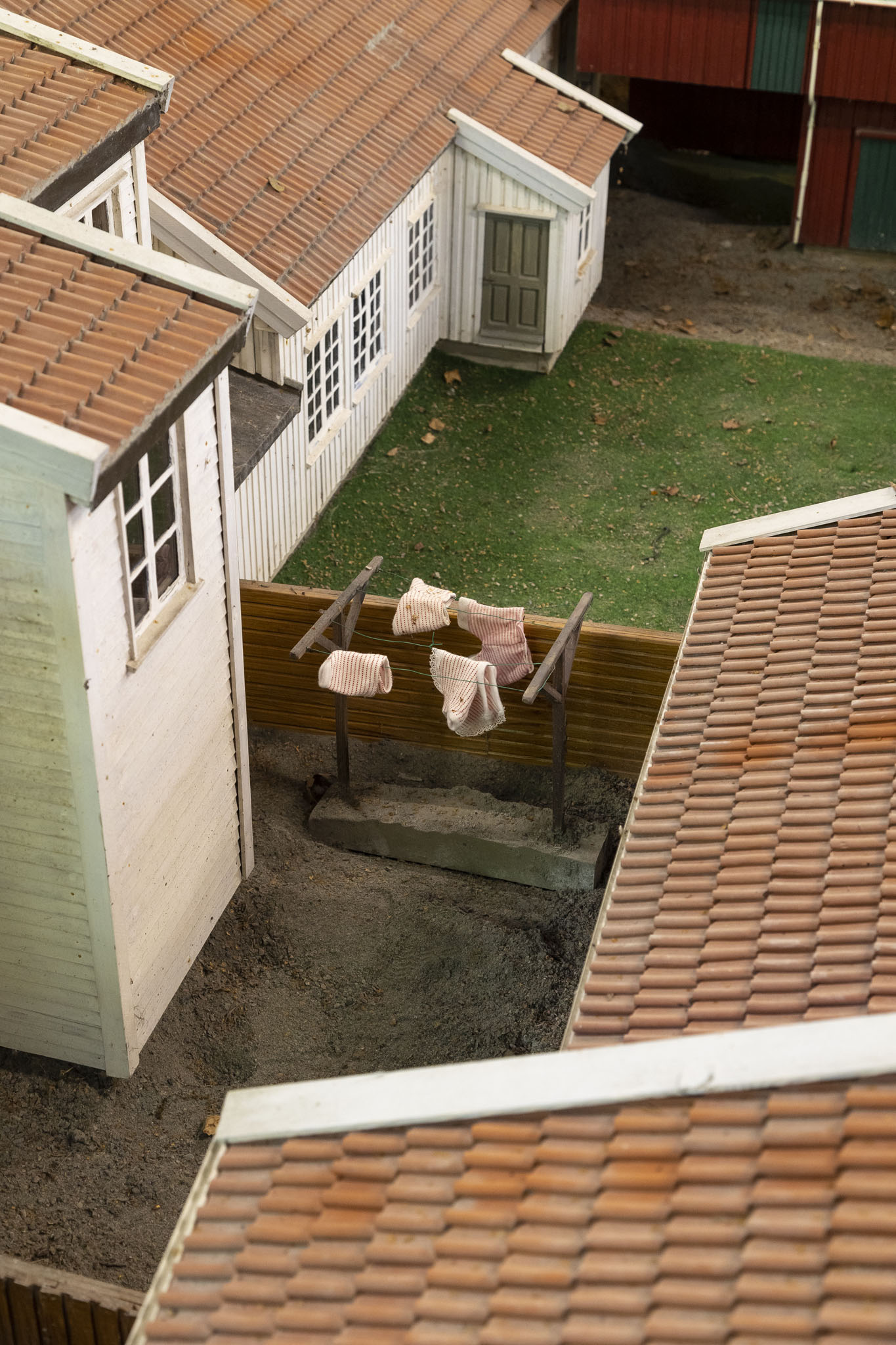After our visit to the fishing village of Høllen we headed back to Kristiansand for a walk around Kristiansand Museum. Kristiansand Museum is an open air museum – or what some people call a folk museum – and it mainly preserves old buildings with some historical or architectural significance that might otherwise have been at risk of being demolished or simply rotting away.
You don’t have to take an organised tour here, but as part of our cruise excursion we got a short one anyway. Hopping off the bus, we met our guide and followed her past some buildings we’d get a chance to see on our own later.
The area of Kristiansand Museum we were taken to was called Setesdaltunet. Indisputably, the prettiest part of the grounds, some of the buildings here dated back to the 1600s. Traditional wooden buildings with grass roofs was the order of the day. The functions of the buildings varied, but the raised floors indicated that storage of grains was an important consideration. In addition to barns and granaries, some of the buildings were accommodation for the wealthier people of the villages from which the building came.
A couple of the buildings were opened up so we could crowd around inside and get a feel for what it must have been like to live in a place like this. One of the interesting facts to come out from this visit was about the sleeping arrangements. In the photo below there are two beds tucked away at the back just about visible behind the people standing in the corners of the room. Someone in our group remarked – rightly – that the beds were ridiculously short. We learned that the Norwegians used to sleep in a seated position with knees drawn up, possibly because there was a superstition about dying while laying down, but possibly because Norwegians have just always been weird. Who knows for sure? I mean, yes, I’ve fallen asleep while sitting, but I’d rather risk death than do it every night.
We were taken around a second home from a relatively more modern era and there are a few interesting things to note in the photos below. Some time was given over to the process of men and women courting by our guide. You can see immediately below a photo of some of the traditional folk dresses that women wore, and there was a definite sense that some were made not just for a special occasion, but also to attract the eyes of men.
The last two photos from this house show a couple of other courting facts. In the first picture you can see a traditional mangle board, a precursor to the iron. The rolling pin was wrapped in damp cloth while the mangle board was held and rolled over the top to remove creases from laundry. Originally simply functional, from the 1600s onwards these started to become decidedly more ornate and the consensus opinion is that they had become a form of wedding present from the man to woman. Here, enjoy this piece of artistry I have made with my own two hands while you press my clothing, woman. So chivalrous. Hanging up in the second photo you can see socks and we were told that these often had padded calves in them in order to accentuate the curviness of a woman’s legs and imply she had strength to do chores. Men do like a nice curve, it’s true.
That concluded our guided portion of our visit to Kristiansand Museum, leaving us free time to explore the other areas. Before I hit those photos, though, a quick shout out to our guide whose name I didn’t catch, but who was fabulous. Funny, informative, great communicator.
Bygaden is the name of the area arranged like a street in an old Norwegian town. We had enough time to wander its length, popping inside those buildings that were open. There were stores, workshops, and houses, more-or-less from the nineteenth century.
As we headed back towards the entrance with our free time at Kristiansand Museum coming to a close we had a quick walk around a barn-like structure hosting a miniature version of Kvadraturen, the centre of Kristiansand, as it would have appeared in the late nineteenth century. I personally think it could have benefitted from more signs of life, coming across as a little deserted as it was, but it was still lovely to see and showcased some excellent craftsmanship.
If you’re a fan of this sort of open air museum then Kristiansand will be right up your street. We enjoyed the visit here a lot, even if, like most cruise excursions, we could have done with a little more time.
That brought our short excursion in Kristiansand to an end but we still had several hours in port before Sky Princess would leave so in the next post in this travelogue series we’ll go for a walk around the city and see some of the sights.










































